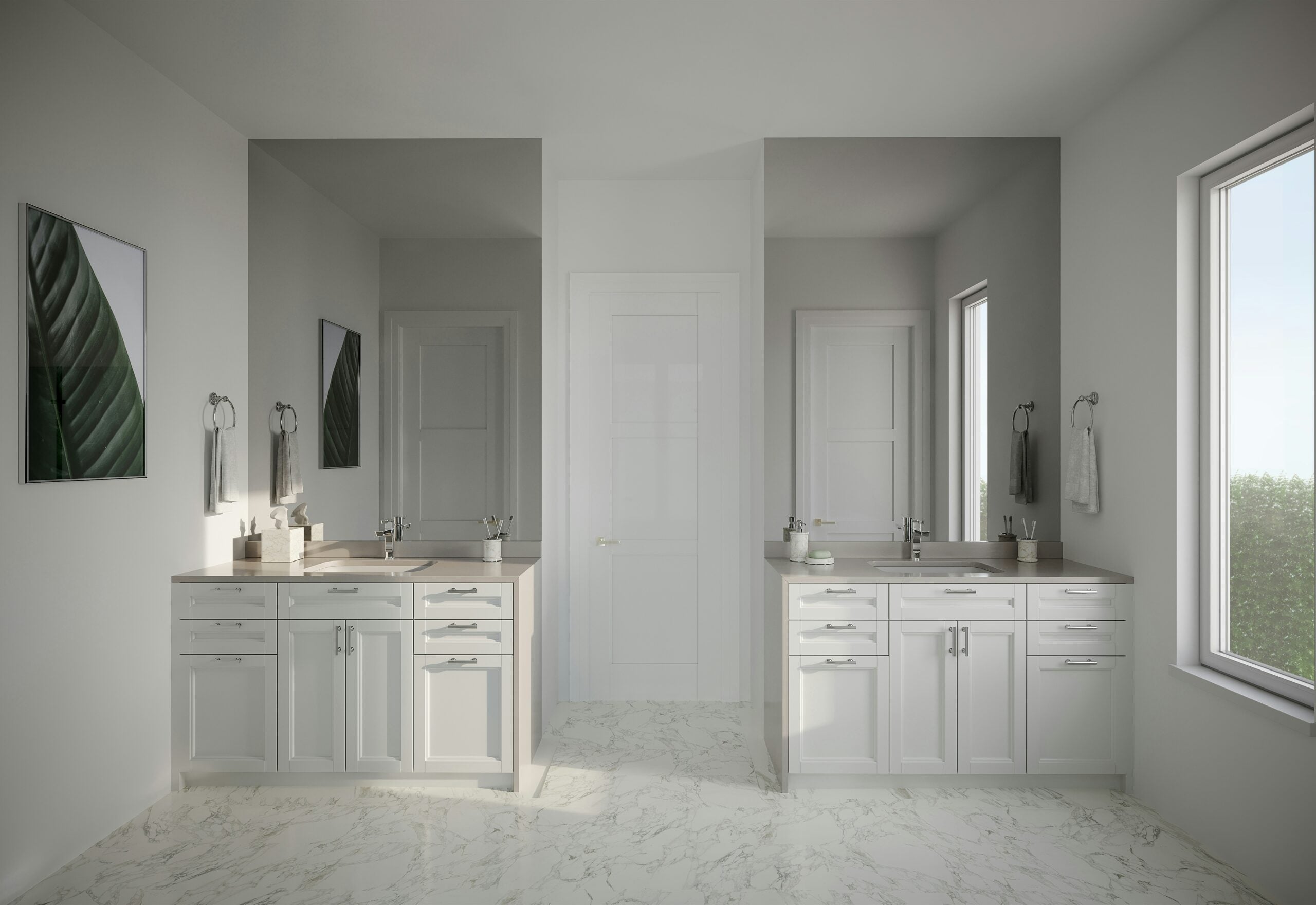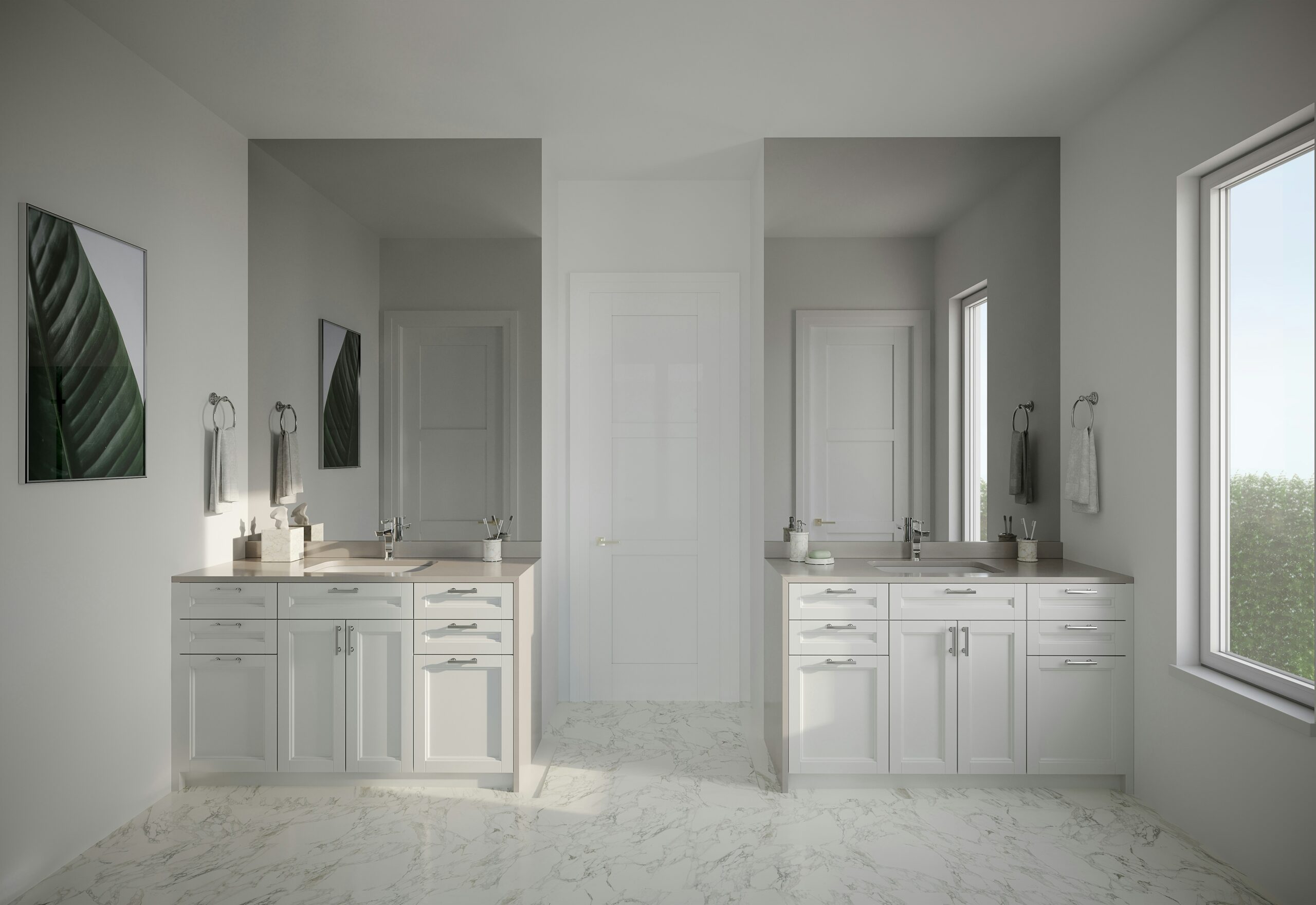Banner image courtesy of Brian Zajac on Unsplash
When it comes to bathroom design, the choice between a floating vanity unit and a traditional vanity unit is a common debate. Both options have their own advantages, and understanding these differences can help you choose the right one for your space, style, and practical needs. Let’s break down the pros and cons of both floating and traditional vanity units to help you make an informed decision.
Floating Vanity Units: The Modern Choice
Floating vanity units, often called wall-mounted vanities, are designed to be suspended off the floor, giving the bathroom a sleek and contemporary look. They typically feature minimalistic designs with clean lines, and the space beneath the unit is left open, creating the illusion of a larger, more spacious room.
Pros of Floating Vanity Units
- Creates a Sense of Space
- The most significant benefit of a floating vanity unit is how it enhances the sense of space in your bathroom. By leaving the floor exposed, the room feels airier and more open, making it ideal for smaller bathrooms or those looking to create a modern, minimalistic aesthetic.
- Easy to Clean
- Without the legs or base of a traditional vanity unit touching the floor, cleaning around the unit becomes much easier. This is especially beneficial in bathrooms where dirt and water tend to collect. The open space underneath makes it easier to clean the floor, giving you a hygienic, low-maintenance solution.
- Sleek and Contemporary Design
- Floating vanities are often associated with modern and contemporary bathroom styles. Their minimalist design is perfect for those looking to create a clean, stylish look that can elevate the entire room. Check out modern bathroom furniture from Plumbworld.
Cons of Floating Vanity Units
- Limited Storage
- One of the biggest drawbacks of floating vanity units is their typically limited storage. Because the unit is suspended, there’s less room for storage beneath it, and many floating units have fewer drawers and compartments than traditional units. If you’re looking for extensive storage space for towels, toiletries, and other bathroom essentials, a floating unit might not be ideal.
- Installation Complexity
- Installing a floating vanity unit can be more complicated than a traditional one. It requires proper wall support, which might not be suitable for all bathroom types, especially those with hollow or weaker walls. Professional installation may be necessary, which can add to the overall cost.
- Price
- Floating vanity units tend to be more expensive than traditional vanity units. The sleek, modern design and the installation requirements often mean a higher price tag. If you’re on a tight budget, this might not be the most cost-effective option.
Traditional Vanity Units: The Classic Choice
Traditional vanity units rest on the floor, often featuring cabinetry with doors or drawers for ample storage. These units come in a variety of designs, from classic to more contemporary styles, and are still a popular choice in many bathrooms due to their practicality and versatility.
Pros of Traditional Vanity Units
- Ample Storage
- One of the biggest advantages of traditional vanity units is the abundance of storage they provide. With multiple drawers and cupboards, they can accommodate a wide range of bathroom essentials, including towels, cleaning supplies, and toiletries. This makes them ideal for larger families or anyone who needs to keep a lot of items within easy reach.
- Wide Variety of Styles
- Traditional vanity units come in a broad range of styles, from rustic to modern, offering something for every bathroom design. Whether you’re looking for something classic and wooden or sleek and modern, there’s a traditional vanity unit to match your aesthetic.
- Easier Installation
- Installing a traditional vanity unit is typically simpler than installing a floating unit. Since these units sit directly on the floor, there’s no need for wall support, and they don’t require special installation expertise. Many people can install a traditional vanity unit themselves, saving time and money on installation.
Cons of Traditional Vanity Units
- Takes Up Floor Space
- One of the biggest drawbacks of traditional vanity units is that they take up valuable floor space. This can make smaller bathrooms feel cramped and cluttered. If you’re working with a tiny bathroom, a traditional vanity might not be the best fit.
- Difficult to Clean Around
- Since traditional vanities sit on the floor, cleaning around them can be more challenging. Dust, dirt, and water tend to accumulate under the base, making it harder to maintain a clean and hygienic bathroom.
- Bulkier Look
- Traditional vanity units, especially those with large cabinets or detailed designs, can sometimes look bulky or heavy, especially in smaller bathrooms. If you’re after a more minimalist or open feel, a traditional unit might feel out of place.
Conclusion: Which is Right for You?
The decision between a floating vanity unit and a traditional vanity unit comes down to your personal style, practical needs, and the layout of your bathroom. If you value modern design, space-saving solutions, and easier cleaning, a floating vanity might be the ideal choice. On the other hand, if ample storage, durability, and a wider variety of styles are more important to you, a traditional vanity unit could be the better option. Ultimately, both types offer distinct advantages, so consider your bathroom’s size, your aesthetic preferences, and your storage needs before making your decision.


